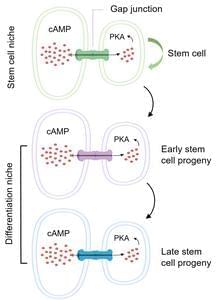Researchers at the Hong Kong University of Science and Technology (HKUST) have found how stem cells’ surrounding environment controls them to differentiate into functional cells, a breakthrough critical for using stem cells to treat various human diseases in the future.
Stem cells play a crucial role in supporting normal development and maintaining tissue homeostasis in adults. Their unique ability to replicate and differentiate into specialized cells holds great promise in treating diseases like Parkinson’s disease, Alzheimer’s disease and type I diabetes by replacing damaged or diseased cells with healthy ones.
Despite their potential therapeutic benefits, one of the major challenges for cell therapies lies in efficiently differentiating stem cells into functional cells to replace damaged cells in degenerative tissue. This task is particularly difficult due to the limited understanding of the underlying molecular mechanism by which the tissues around stem cells, known as the stem cell niche, guide stem cell progeny to differentiate into proper functional cell types.
